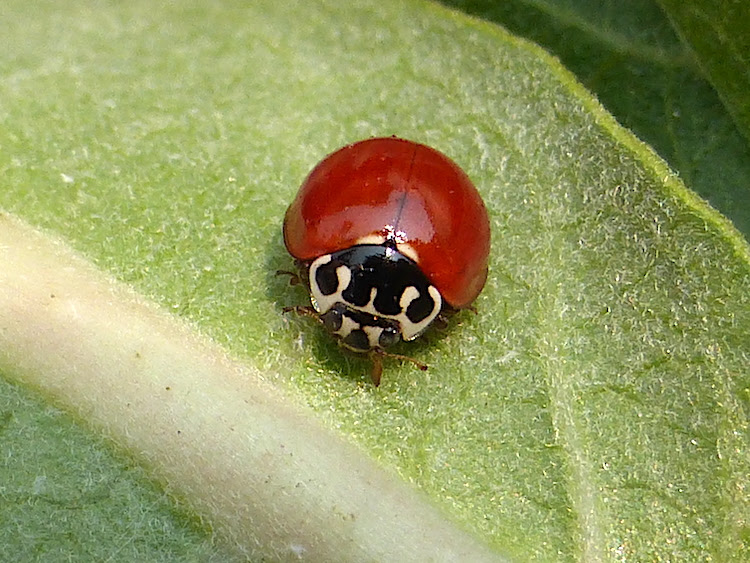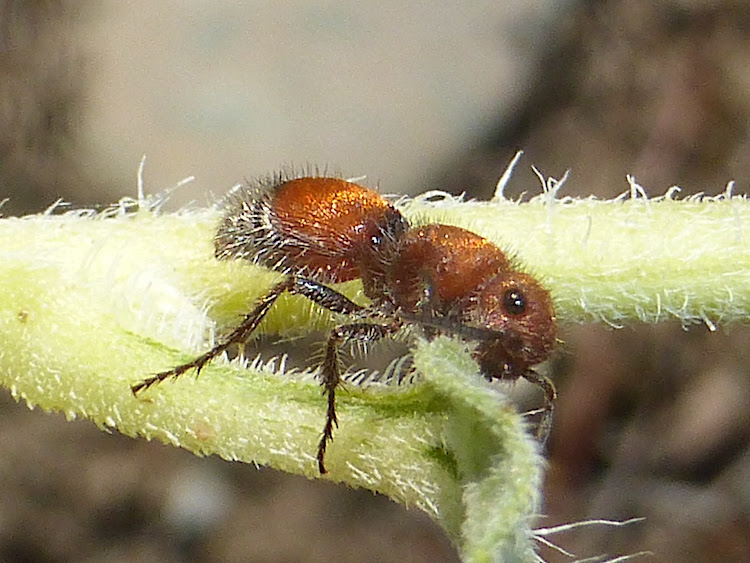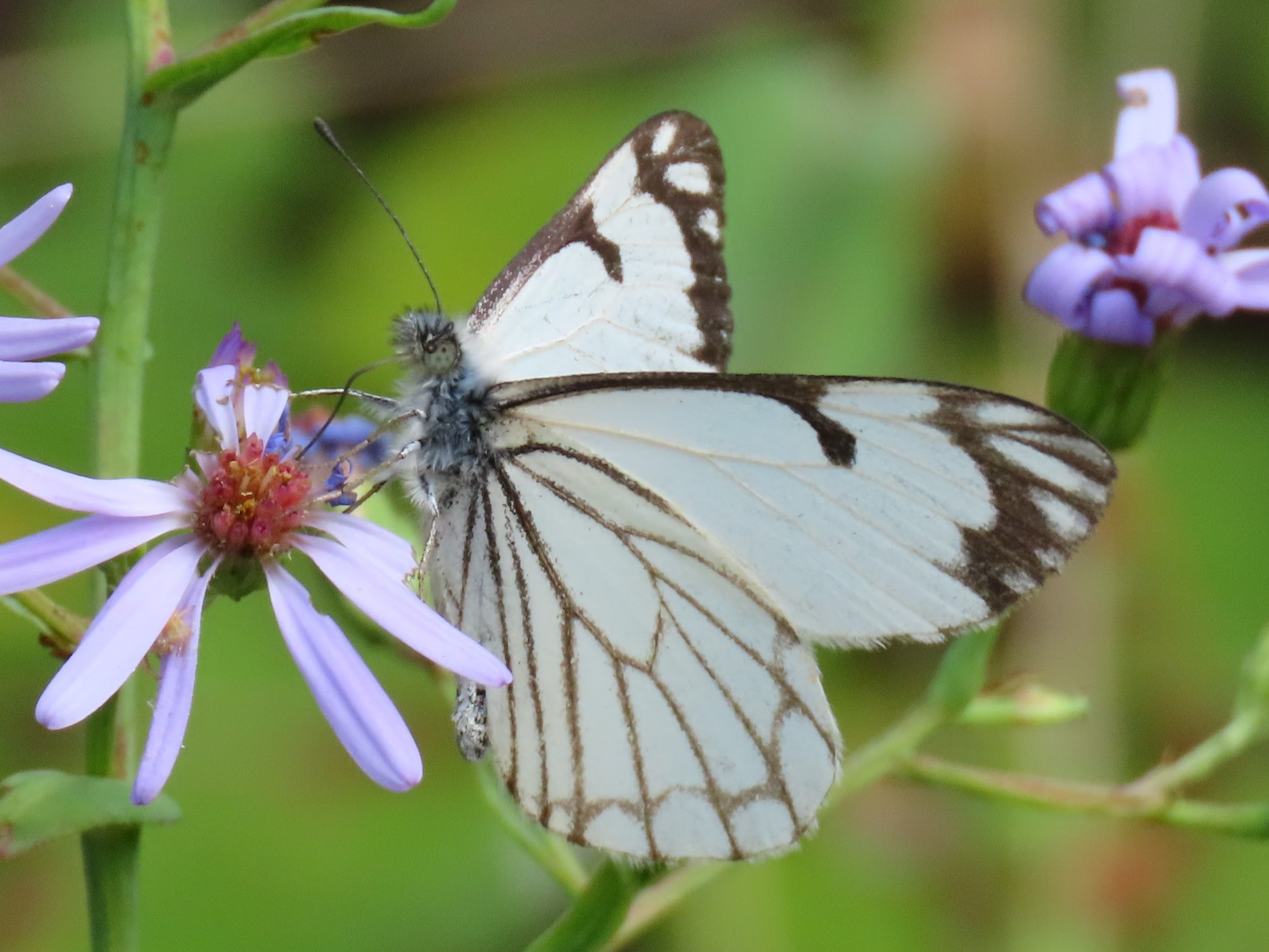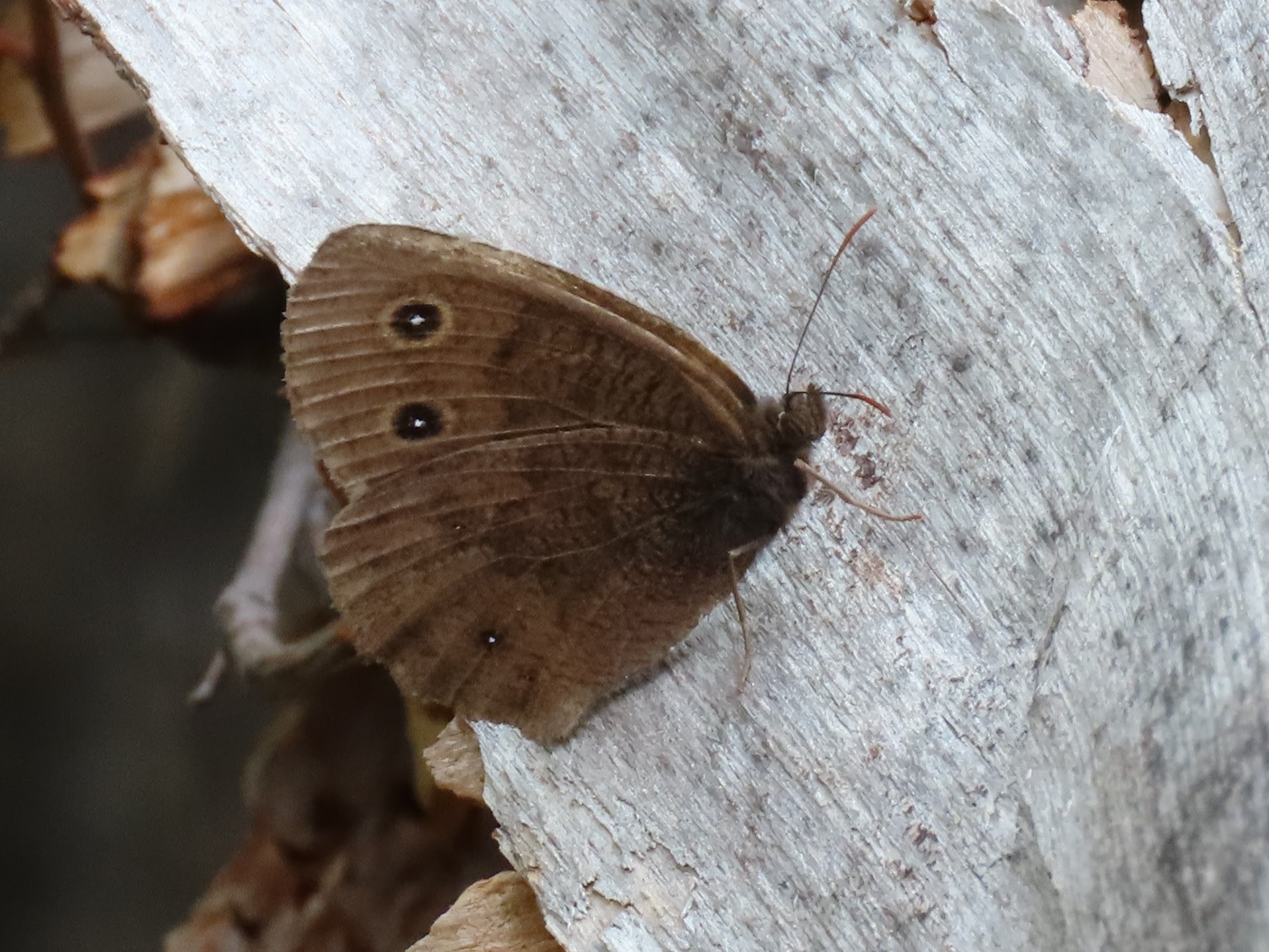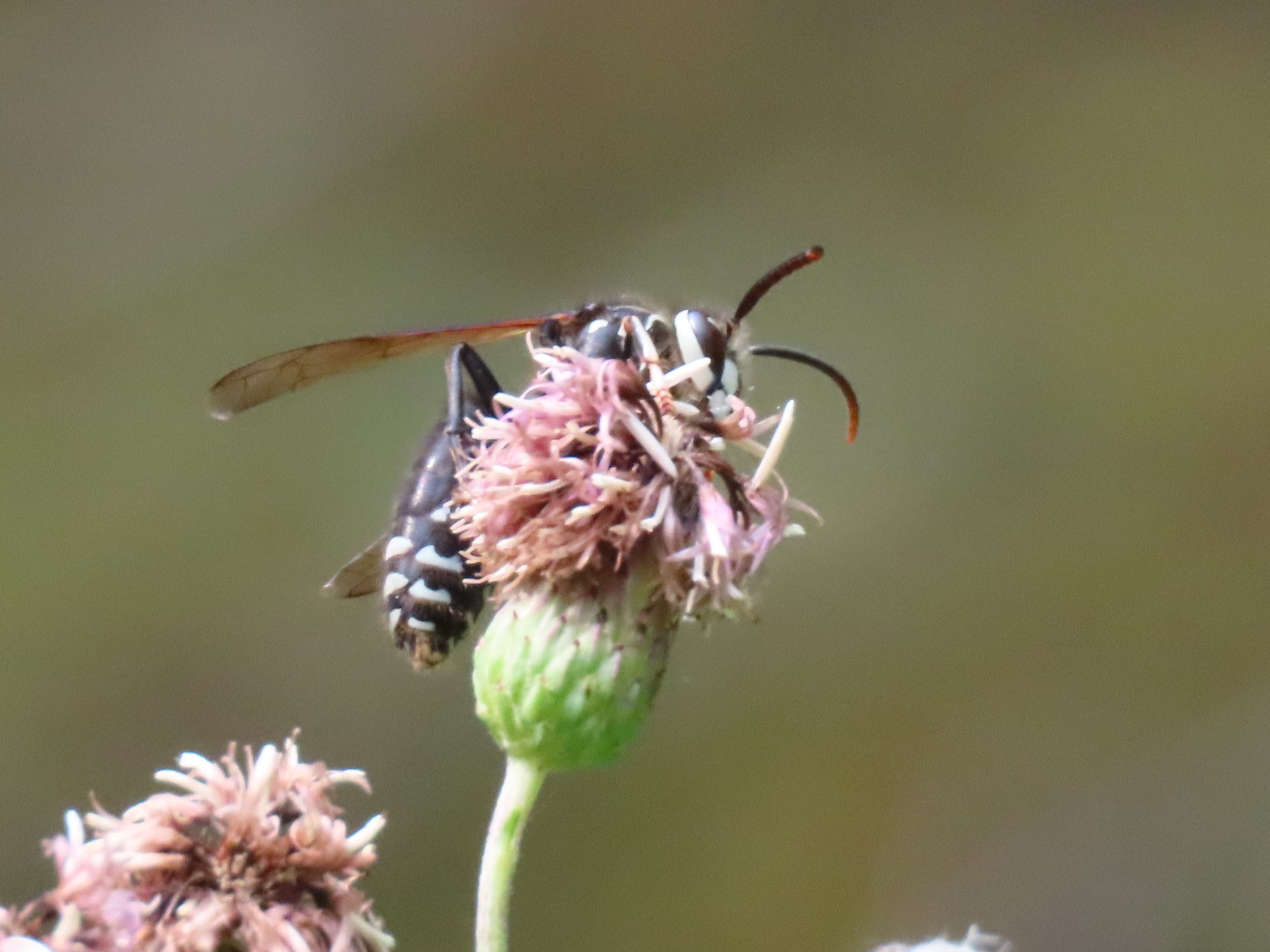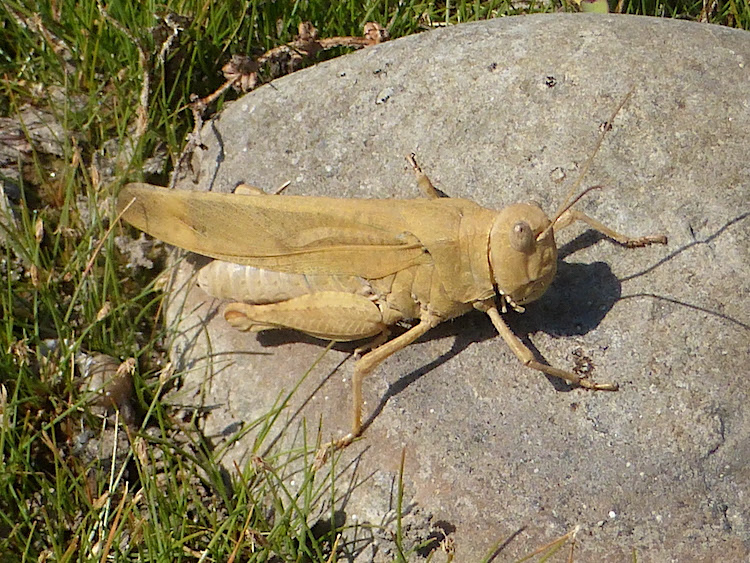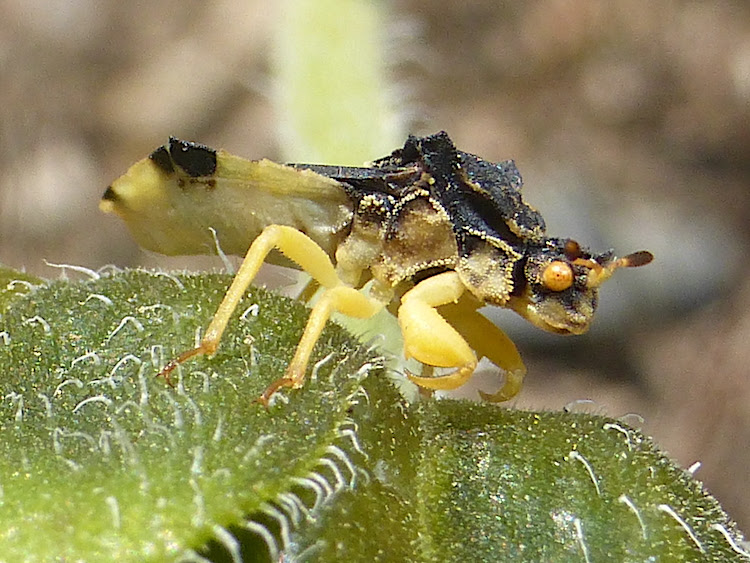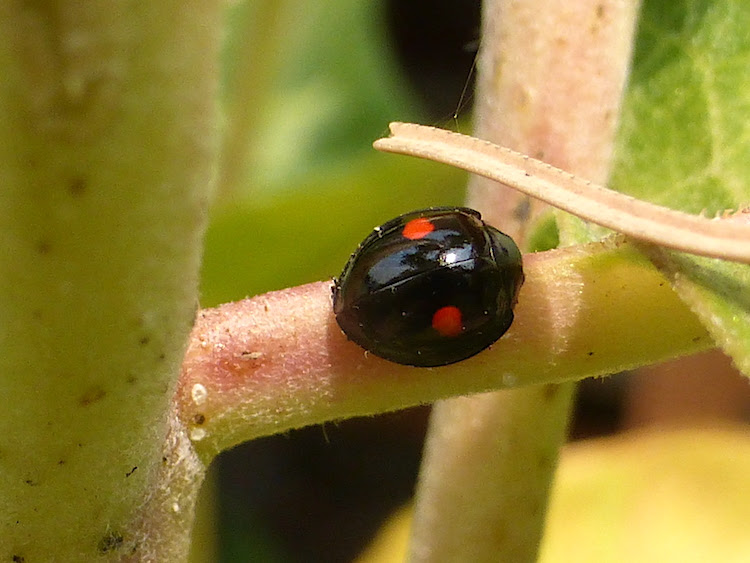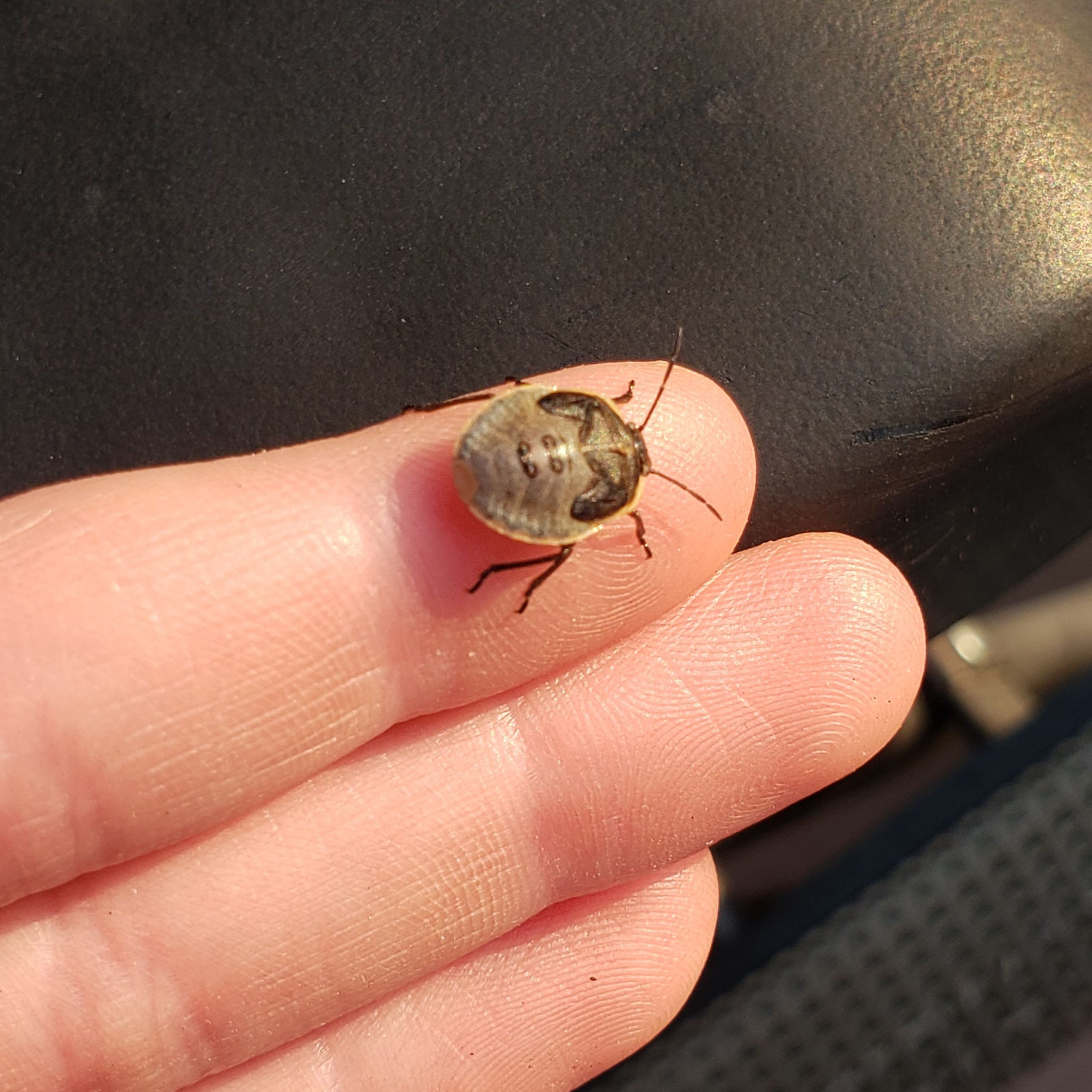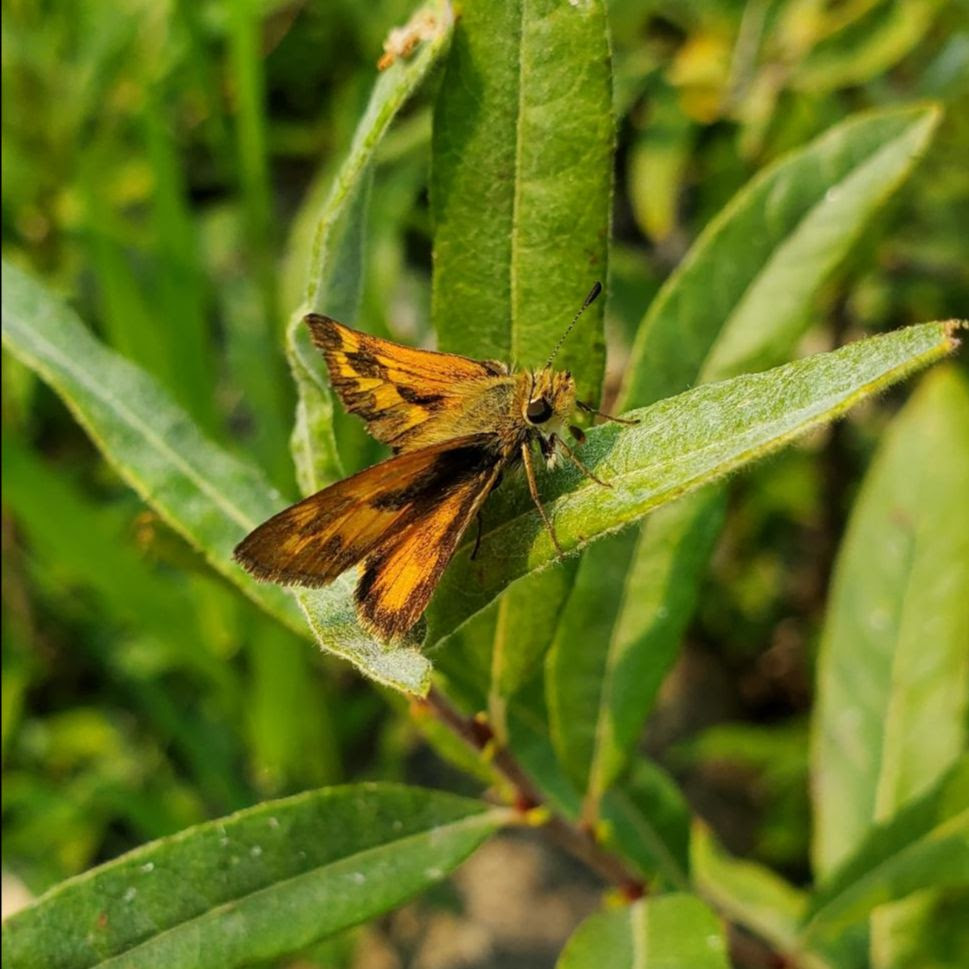This blood red beetle certainly looks like it has been polished to a shine. As the name suggests, this species ranges across the west—in the Pacific Northwest, south to southern […]
Read MoreWhat’s Buzzin’
What can you see around Western Montana right now?
Velvet Ant (likely Dasymutilla bioculata)
This Velvet Ant, along with others, were observed clambering around on the stems and leaves of Common Sunflowers (Helianthus annuus) during a bug survey on the Rock Creek Confluence property. According to “Bug Eric” (Eric Eaton), […]
Read MorePine White (Neophasia menapia), male
These beautiful butterflies are all over the place right now …you just need to look up. From August through September you will notice these white butterflies flying around the tops […]
Read MoreCommon Wood Nymph (Cercyonis pegala)
These butterflies can be found in southern Canada and across most of the United States except much of the Southwest and Texas, southern peninsular Florida, and northern Maine. Their appearance […]
Read MoreBald-faced Aerial Yellowjacket (Dolichovespula maculata)
This species of yellowjacket goes by many names across its range, including the Bald-faced Hornet. In the U.S., they are most common in the southeast, but can be found in the Rocky Mountain States, […]
Read MoreCarolina Grasshopper (Dissosteira carolina)
In flight they may be mistaken for Mourning Cloak Butterflies because of their similar size, bobbing flight, and wing coloring. Carolina grasshoppers are abundant across the U.S. and Canada in all habitats, including roadsides, vacant […]
Read MoreJagged Ambush Bug (Phymata americana)
The Jagged Ambush Bug’s forelegs are thick and shaped like those of a praying mantis—perfect for grabbing and holding prey. In the same family as assassin bugs (Reduviidae), they have […]
Read MoreTwice-stabbed Lady Beetle (Chilocorus stigma)
This unique species of lady beetle has a descriptive, but gruesome, common name. Being all black in color, except for two red dots in the center of each wing cover […]
Read MoreConchuela Bug (Chlorochroa ligata)
Our best guess for this immature bug (nymph) is a Conchuela Bug. These stink bugs come in a range of colors—olive-green, brown, gray, or black, with southern populations darker across their western North […]
Read MoreWoodland Skipper (Ochlodes sylvanoides)
These small, tawny orange butterflies start to emerge in mid to late summer and can be found in just about any habitat; including sagebrush, woodland clearings, gardens, and small streams. Caterpillars […]
Read More